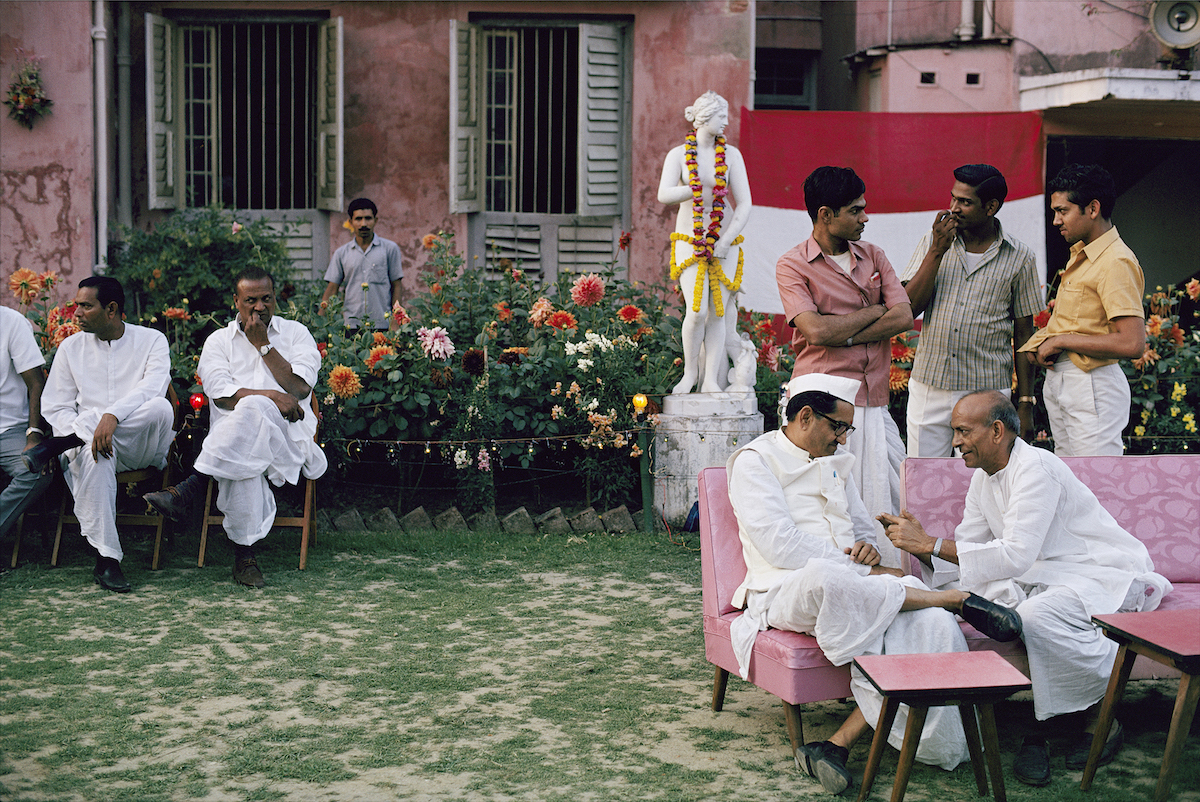The Color of the Earth
by Kanishk Tharoor

Like other modernists of the 20th century, Raghubir Singh was eager to find a uniquely “Indian” vocabulary for his art. It was in part through color that he would distinguish himself from his western counterparts. And like some Indian modernists (the author Raja Rao, a pioneer of the Indian novel in English, comes to mind), he chose to dress his defining aesthetic choice in spiritual mumbo-jumbo. “The fundamental condition of the west is one of guilt, linked to death — from which black is inseparable,” Singh wrote in 1998, a year before his premature death. “The fundamental condition of India, however, is the cycle of rebirth, in which color is not just an essential element but also a deep inner source, reaching into the subcontinent’s long and rich past.”
India is a tropically abundant country. Its natural and built environments teem in ways that temperate Europe and North America do not. Both Cartier-Bresson and Singh took street photos that catch people in often fantastical contrasts against murals, graffiti, and posters — testament to a visually dense urban landscape. India’s painters, weavers, and other artists have long borrowed from a fairly colorful palette, but it can be lazy to fetishize color as somehow particular to Indian art (or worse, the Indian soul). Singh, for his part, was active at a time when color film offered radical possibilities not merely in India but all over the world. One of his influences and friends, the Indian filmmaker Satyajit Ray, is given a room in the exhibition where visitors can watch black-and-white rural scenes from his Apu trilogy. It seems to me, however, that it would have been more appropriate to allot that space to Ray’s friend, the Japanese director Akira Kurosawa. One of his best color films, the kaleidoscopic Kagemusha (1980), shares the same cavalier vision and love for the vivid world that undergirds Singh’s photo Boy at Bus Stop (1982), in which a self-assured little boy in a mint shirt stands beneath a heavy and fulminating sky, framed by a light blue bus and the dark green fronds of a tree.